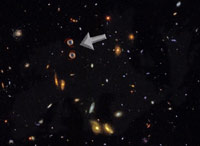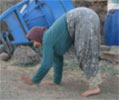Did Hillary Clinton Participate in a Menstrual Synchrony Study? —

One of the stranger rumors I encountered in the course of writing
Elephants on Acid
was the suggestion that Hillary Clinton participated in a menstrual synchrony study while she was a student at Wellesley College during the 1960s. Stranger still, I haven't been able to disprove this.
Here are the facts. In 1968, Martha McClintock, while a senior at Wellesley College in Massachusetts, convinced all 135 of her dormmates to participate in a study of the phenomenon of synchronous menstruation. She recorded the date of onset of their menstrual cycles three times during the academic year. Her hypothesis was that their cycles would synchronize as the year progressed, and this is what her data showed. She published an article about her study in a 1971 issue of
Nature (1971, 229: 244-245). It remains a highly regarded study.
Hillary Clinton (then Hillary Rodham) was also a senior at Wellesley in 1968. This raises the possibility that she participated in McClintock's study. There were about 400 students in the senior class, which make the odds pretty good that Hillary participated in the study. (A third of the class participated.) The question is: Did the two women (Rodham and McClintock) live in the same dorm?
In her autobiography, Clinton writes, "During my junior and senior years, Johanna Branson and I lived in a large suite overlooking Lake Waban, on the third floor of Davis." McClintock, however, has never revealed what dorm she conducted her study in. I emailed her and asked, thinking that maybe she could say that she didn't conduct the study in Davis, even if she couldn't reveal where she did conduct it. She simply replied, "I cannot answer this question due to privacy regulations."
This leaves open the possibility that Hillary did participate in McClintock's study. I emailed the Clinton campaign, but they never responded to me. My hunch, however, is that she didn't participate in it. It seems like the kind of thing that would be more widely publicized if it were true.
Of course, it doesn't really matter whether she did participate in the study or not. Although if she did, it would be interesting as a piece of biographical trivia. Hillary Clinton herself would seem to be the only person who can confirm or deny the rumor.

 One of the stranger rumors I encountered in the course of writing Elephants on Acid
One of the stranger rumors I encountered in the course of writing Elephants on Acid Back in the early 1960s Stanley Milgram conducted a famous experiment at Yale University. Volunteers were told that it was designed to test the effect of punishment on learning. Would a person learn a list of word pairs better if they were punished every time they got an answer wrong? The volunteer was instructed to deliver an electric shock to the learner every time one of his answers was wrong. The shocks increased in intensity for every wrong answer. Of course, the experiment wasn't actually about the effect of punishment on learning at all. It was really designed to see how long the volunteers would obey the authority of the researcher. Would they continue to give electric shocks to the learner even when it appeared that doing so would kill the learner? Over sixty percent of them went ahead and gave the shock. They were led to believe that they had killed or seriously injured the learner (who was actually just an actor).
Back in the early 1960s Stanley Milgram conducted a famous experiment at Yale University. Volunteers were told that it was designed to test the effect of punishment on learning. Would a person learn a list of word pairs better if they were punished every time they got an answer wrong? The volunteer was instructed to deliver an electric shock to the learner every time one of his answers was wrong. The shocks increased in intensity for every wrong answer. Of course, the experiment wasn't actually about the effect of punishment on learning at all. It was really designed to see how long the volunteers would obey the authority of the researcher. Would they continue to give electric shocks to the learner even when it appeared that doing so would kill the learner? Over sixty percent of them went ahead and gave the shock. They were led to believe that they had killed or seriously injured the learner (who was actually just an actor). According to Wikipedia, the Casimir Effect (which is real) is "a physical force exerted between separate objects, which is due to neither charge, gravity, nor the exchange of particles, but instead is due to resonance of all-pervasive energy fields in the intervening space between the objects." The effect is best observed with things such as parallel plates of metal in a vacuum.
According to Wikipedia, the Casimir Effect (which is real) is "a physical force exerted between separate objects, which is due to neither charge, gravity, nor the exchange of particles, but instead is due to resonance of all-pervasive energy fields in the intervening space between the objects." The effect is best observed with things such as parallel plates of metal in a vacuum.  I've posted before about theories that microwaved food is bad for you, but this is slightly different. Some guy has posted pictures of his granddaughter's science fair project in which she tested the effect microwaved water would have on a plant. The result: the plant died. (Yes, the water had been cooled before she watered the plant with it.) But the plant given water that had been boiled on a stove did just fine. So what does this prove? That microwaved water is toxic? Not necessarily. The guy notes:
I've posted before about theories that microwaved food is bad for you, but this is slightly different. Some guy has posted pictures of his granddaughter's science fair project in which she tested the effect microwaved water would have on a plant. The result: the plant died. (Yes, the water had been cooled before she watered the plant with it.) But the plant given water that had been boiled on a stove did just fine. So what does this prove? That microwaved water is toxic? Not necessarily. The guy notes: Dave forwarded me this email he received (which, he noted, was dated April 1, so it seemed a bit suspicious to him). The subject line of the email reads: DEEP-SPACE PHOTO: EP_4277. The text reads: The subject of this photo is a very rare one indeed - taken by NASA with the Hubble space telescope. This is the only documented existence of a binary king galaxy in our known universe.
Dave forwarded me this email he received (which, he noted, was dated April 1, so it seemed a bit suspicious to him). The subject line of the email reads: DEEP-SPACE PHOTO: EP_4277. The text reads: The subject of this photo is a very rare one indeed - taken by NASA with the Hubble space telescope. This is the only documented existence of a binary king galaxy in our known universe.

 Zkato wants to know if the fossil of fighting dinosaurs found on the website of the Nakasato dinosaur Center is real. The fossil does sound a little too good to be true:
Zkato wants to know if the fossil of fighting dinosaurs found on the website of the Nakasato dinosaur Center is real. The fossil does sound a little too good to be true: